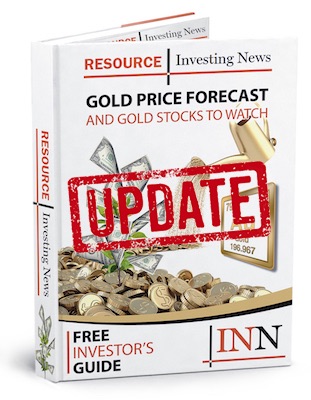The gold price may not be as high as some investors want it to be, but according to Doug Groh, portfolio manager at Tocqueville Asset Management, the yellow metal is performing just as it should be.
“Gold is doing what it’s supposed to do, it’s providing a hedge to monetary policy,” he said at the sidelines of the recent Mines and Money conference in New York.
Groh emphasized that it’s important for investors to remember that gold is “not necessarily supposed to [put on] a performance in a portfolio … it’s a sense of security and store of value.” He added, “gold offers an alternative in a portfolio in that it’s not correlated to other assets.”
Continuing, he pointed out that gold market is actually “rather constructive” right now due to a number of factors, including the amount of credit that’s being created and the recent US tax bill. “A lot of people aren’t paying attention,” Groh said.
Listen to the interview for more insight on gold from Groh, as well as an overview of the Tocqueville Gold Fund. The transcript is available below.
INN: This is our first time speaking, so I wanted to start by asking you about yourself. At Tocqueville Asset Management you’re co-portfolio manager of the Tocqueville Gold Fund — could you tell me about the fund and your work at the company?
DG: Sure. Tocqueville Asset Management is located here in New York, we manage about $11 billion; of that $11 billion about $1.7 billion is invested in gold and gold-mining equities. What we’re trying to offer to our clients is an opportunity to participate in the gold market as a hedge, an alternative to monetary policy.
INN: The fund gives investors exposure to both physical gold and gold stocks. Why is it important to strike that balance for investors?
DG: Well in our mutual fund, which is about a billion dollars … approximately 12 percent of the fund is in physical gold, and that’s gold that’s vaulted outside the financial system — it’s actually vaulted in a Brinks facility here in the New York area. And what we’re trying to do is through that fund offer our investors direct exposure to physical gold.
But in addition we have exposure to the gold-mining companies, and the gold-mining companies offer a number of different attributes in terms of investment propositions. One is they’re leveraged to the gold price through their operations or through their assets, but also these companies are able to create value through the strategic initiatives they undertake. It might be expanding their operations or a discovery and developing that discovery, or perhaps through M&A — and we see a lot of M&A in the marketplace, and we’ve tried to capture that opportunity as well.
INN: What criteria do you follow when you’re investing in gold companies for the fund?
DG: What we’re looking for is a company that’s going to create value, and typically the value is initially created through the assets. So what we’re looking for is good-quality assets that are run by a very thoughtful, effective management team. The asset and the management strategy are very important, and of course the financial position of the company to execute that strategy is a primary concern for us. We want to make sure that they have sufficient capital, that they’re able to access capital in the marketplace [or] if they don’t have the adequate capital today that they do have access to the marketplace so that they can develop their assets and realize the full value of their strategy.
INN: What is the breakdown in the fund like in terms of producers, mid-tier companies and juniors, and can you mention any specific stocks that are included and what is attractive about them?
DG: I mentioned about 12 percent of the fund is in bullion. Another 35 or so percent is in larger companies, the larger mining companies, which includes the royalty companies. And about 15 percent of the overall fund is in the royalty companies — and that would be Franco Nevada, Osisko Royalties, Royal Gold, Wheaton Precious Metals. We have about 15 percent of the fund exposed to what we consider silver companies, silver-mining companies such as Pan American Silver, and we think of silver companies as those that are generating about two-thirds of their revenue from silver production.
Then another third of the portfolio is in the mid-tier to the smaller companies that are able to effectively add value to their strategic initiatives and hopefully get a re-rating by the marketplace. And then finally the smallest percentage — I think we’re maybe down to 10 or 15 percent, [or] even less — are in the exploration companies. We used to have more exposure to the explo companies, but with the contraction over the last five or seven years we don’t have as much exposure there.
However, I think it’s a very interesting part of the gold-mining spectrum because these are companies that are certainly undervalued and can create significant value. And so we’re beginning to take a look at that a little bit more actively. Gold Standard Ventures is a name that we recently added. We’re beginning to look at those companies in the North American market that might make a discovery.
INN: That’s very exciting. We’re here at Mines and Money in New York, and you came to talk about gold. Last time I checked the gold price was about flat year-to-date despite trade war concerns and other geopolitical issues. Is now a good time to invest in gold? And why have we not seen more of an upward performance this year?
DG: I think gold has actually done pretty well in the last couple of years. In late …read more
From:: Investing News Network

